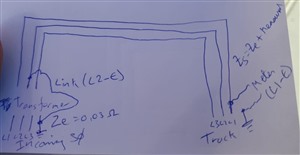I am an electrical inspector and I have come to large a newly installed machine (multiple moving parts, multiple independent motors and safety circuits) where the supply for the device is on a safety isolating transformer. This means that when I try and test the earth loop impedence for the supply I get no connection. In my mind this means that there is the potential that in an earth fault situation the device might not trip its breakers and other circuit protective devices as no fault path is generated. I have never seen an entire device protected by a safety isolating transformer and I don't know enough about them to say so I thought I would come to the experts on here for assistance! What would the advantages of this be and would there be safety implications of an installation like this?
Thanks in advance
Tom



